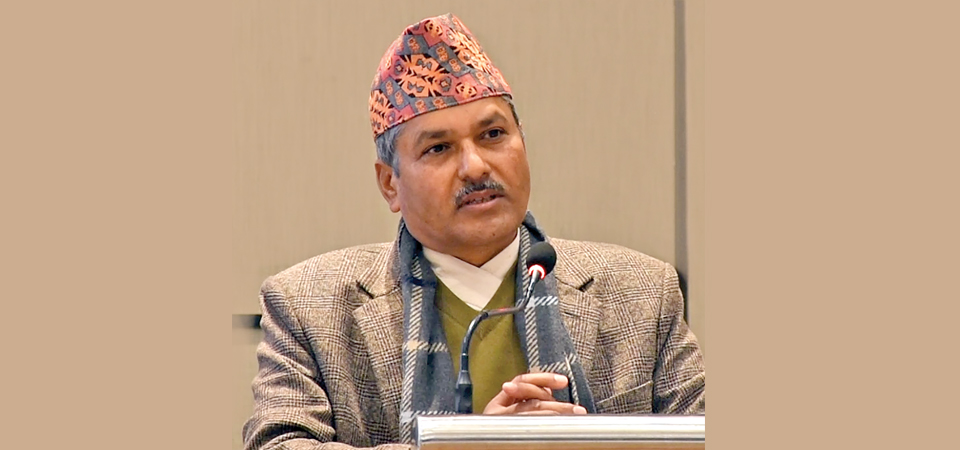NRB devising long-term strategy to resolve liquidity crisis

By Modnath Dhakal
Kathmandu, Dec. 23: The Nepal Rastra Bank (NRB) has said that the policy to tighten the import of luxury goods is a short-term alternative to increase liquidity in the banking system. "Huge rise in imports has forced the government and central bank to find ways to curtail it. However, this austerity measure is used as a short-term measure," Governor of the NRB, Maha Prasad Adhikari, said at an interaction programme with economic journalists on Wednesday.
The central bank is working on the mid-term and long-term strategy to address the recurring challenges of liquidity pressure and depleting foreign exchange reserves, he said.
According to him, the central bank would make necessary interventions in the financial system if there were any problems but if the new policies created negative impacts or didn't deliver the expected results, they would be amended or replaced with new ones.
Governor Adhikari said that the recent directives of the central bank to maintain cash margin when opening Letter of Credit (LC) to import luxury items was an effort to discourage the import of such goods. "If there is genuine demand, the policy does not bar the importers from brining in luxury goods to the country," he said while stating that this step wouldn't increase the price of goods either.
Executive Director of Economic Research Department at the NRB, Dr. Prakash Kumar Shrestha, said that the current economic status of the country was not as bad as depicted. "Indicators like remittance inflow, foreign exchange reserve, and liquidity seem weakened this year when we compare them with the corresponding period last year. That is a unique situation created by the COVID-19 pandemic," he said.
For example, the foreign exchange reserve was used up at the rate of Rs. 73 billion per month four years ago. Last year, it was Rs. 80 billion per month and it has come down to Rs. 78 billion per month this year.
"If we take into account the abnormal situation of the previous year, indicators don't look so scary," said Governor Adhikari.
He maintained that the abrupt revival of the businesses and economic activities in the aftermath of the second wave of the COVID-19 had used up the resources and created pressures in the financial system.
"Economic revival has caught speed. This was sure to have impact on growth and liquidity," he said.
President of the Nepal Bankers' Association (NBA), Anil Kumar Upadhyay, pointed out the need to embrace innovative methods to steer the country's economy to the new normal after the pandemic. "There haven't been any discussions regarding the strategy to be adopted in the new normal," he said.
Similarly, President of the Nepal Finance Companies Association, Saroj Kaji Tuladhar, said that bad debt and unproductive lending would increase when there is high liquidity.
President of Development Bankers' Association Nepal, Pradyumna Pokharel, stressed on channelising remittance to productive sectors and development projects.
Recent News

Do not make expressions casting dout on election: EC
14 Apr, 2022
CM Bhatta says may New Year 2079 BS inspire positive thinking
14 Apr, 2022
Three new cases, 44 recoveries in 24 hours
14 Apr, 2022
689 climbers of 84 teams so far acquire permits for climbing various peaks this spring season
14 Apr, 2022
How the rising cost of living crisis is impacting Nepal
14 Apr, 2022
US military confirms an interstellar meteor collided with Earth
14 Apr, 2022
Valneva Covid vaccine approved for use in UK
14 Apr, 2022
Chair Prachanda highlights need of unity among Maoist, Communist forces
14 Apr, 2022
Ranbir Kapoor and Alia Bhatt: Bollywood toasts star couple on wedding
14 Apr, 2022
President Bhandari confers decorations (Photo Feature)
14 Apr, 2022











